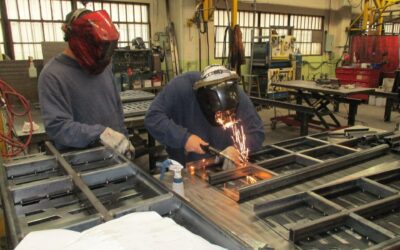Laptops and PCs lock and freeze all the time, right?
It’s no big deal, we all know to “turn it off and on again.” It’s a pretty standard problem and one that happens daily in your business.
You have your security firewalls all up to date with premium security and anti-virus software running on every computer. There’s nothing to worry about when it comes to your computers catching viruses and there’s no way hackers are getting past your excellent IT security.
This is a common misconception and one that had a large Boeing subcontractor calling us in a state of panic this spring.
Their day started out just like everyone else’s day. They switched on their computers, grabbed and coffee and go to work producing airplane sub-assemblies. Everything is running smoothly. As the day progresses, their workers started to notice their computers locking up and freezing. By 3 pm, they realized the problem had spread throughout the company and everyone was experiencing these freezes within minutes of their computers restarting.
Time was ticking and productivity and sales were decreasing by the second. In a state of panic, they call IT Assurance to investigate the matter. It didn’t take us long until we identified a ransomware virus floating around their network taking full control of their computers.
How was this happening?
They had all their IT security boxes checked! Maximum firewall security and anti-virus software were installed on every computer! Employees were trained not to click bad emails! What went wrong?
After a few hours of investigation, we identified the culprit. An engineer was looking for a file that was left on an old computer. He took a Windows XP computer from their IT closet and plugged it in. From the time he plugged it in, it was only a matter of hours before an online virus deployment server located his Windows XP machine, infected it, and then propagated out from that computer onto their entire network. This invisible process happened almost immediately once the machine connected to the internet, and suddenly a hacker had their network in his hands.
Thankfully, the experts at IT Assurance were able to get their network restored, but at the cost of days of downtime and missing several production deadlines with Boeing.
How Do Microsoft Security Patches Work?
Imagine that Microsoft Windows is a wall and viruses are wall-eating bugs that leave big holes in the wall every time they attack. Microsoft employs ‘repair people’ to find these bugs, remove them and ‘patch’ up the holes they created in the wall using security patches
It’s a game of cat and mouse. The bugs are constantly eating holes into the wall and the ‘repair people’ are right behind them, patching up the holes as quickly as possible. It’s a regular occurrence and most users are barely aware it’s happening in the background as they use technology. Microsoft patches up between 1000-2000 holes per year.
What’s Happening Now?
Microsoft has announced that they will be discontinuing support patching for Windows 7 on January 13th, 2020.
This means Microsoft will suddenly stop employing repair people to patch up those holes being made in the wall. So when a wall-eating bug (virus) eats his way through the wall, the hole will be opened and exposed indefinitely.
You might be thinking that you may have some extra time after the due date before it gets ‘really bad’, but unfortunately, this just isn’t the case. When the hackers hear that the ‘repair people’ will be unemployed on January 13th 2020, they will store up their viruses and hacks for that date and unleash them in a rush.
We know this will happen because it’s exactly what happened when Microsoft stopped patching Windows XP. It was only a matter of hours before viruses and exploits were sent into the wild and the Windows XP machines left in the world were quickly overrun by viruses and infections.
What Do I Need to Do?
You must upgrade or replace any Windows 7 computers prior to the deadline to avoid this happening to your systems.
First of all, you must ensure that you’re not running any software that is incompatible with Windows 10. This is a rare situation, but you may have old machines and PCs from a company that has gone out of business and needs to checked and possibly replaced in order to do the upgrade.
Once you’re sure all your software will work, an upgrade from Windows 7 Professional to Windows 10 Professional costs $199 and you can be bought directly from Microsoft Online.
Alternatively, you can replace any computers that are over four years old with PCs that already have Windows 10 installed. If you find that you need to replace a lot of your computers and you’d rather save the expense, consider buying from Dell, IBM or HP who are offering discount programs for companies that need to replace large numbers of computers. Investing in these upgrades may just save you thousands of dollars and prevent the company from losing uptime and sales as viruses take our your networks.



